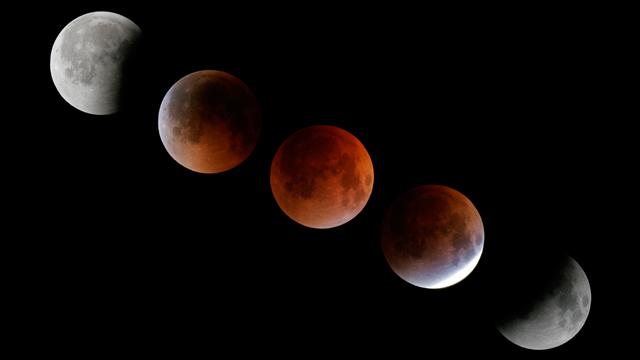
Look, up in the sky! Is it a moldy orange? A giant celestial penny? A dragon eating the Moon? In fact, it's a total lunar eclipse, and coming soon to a sky near you….
December 10, 2011 marks your last chance to see a total lunar eclipse—one of the most breathtaking celestial events that you can witness with your unaided eye--until 2014. For us on the West Coast, the drama of the Moon's occlusion will play out in the early morning hours of Saturday—weather permitting, as always.
A total lunar eclipse occurs when the Moon passes through the long shadow the Earth casts into space. We see a partial lunar eclipse when only part of the Moon grazes the Earth's shadow and a total eclipse when it is completely engulfed in darkness.
The overall eclipse begins at about 3:33 AM on the morning of December 10, when the Moon first touches Earth's penumbra, or "half shadow" (the region of space where only some of the Sun's light is blocked by the Earth). At the beginning, you might be challenged to notice anything different about the Full Moon, unless you're looking for something—in which case you might start to notice a slight darkening at one edge of the Moon's disk.
By 4:46 AM, the real show begins: the Moon will begin to enter the umbra, the Earth's full shadow, in which no direct sunlight shines. Now, a very noticeable "bite" will be taken out of the Full Moon—as if some great celestial creature is nibbling it at the edge. (To the Chinese, this animal was thought of as a dog or a dragon; to the Maya, often a jaguar; and if you mix your myths well, you might imagine those creatures eating green cheese….)
